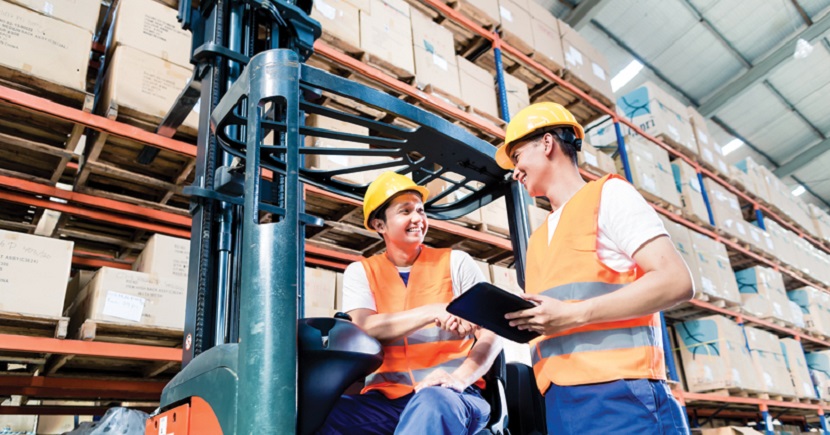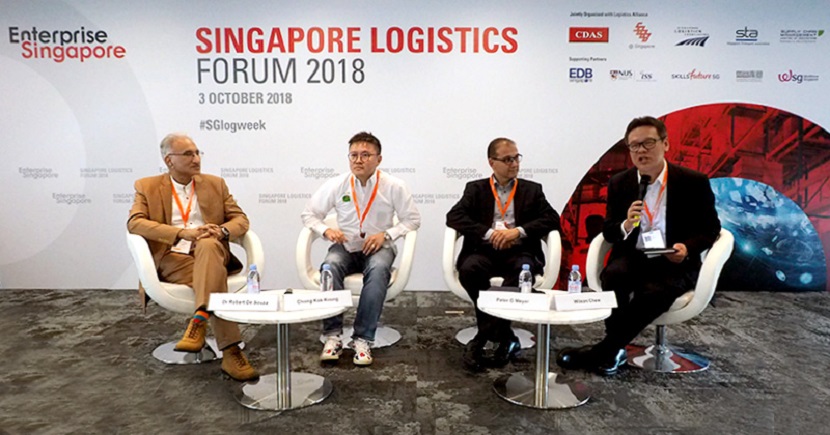
The rise of the middle-income group in Asia is driving global consumption, and it will continue to do so in the next couple of decades. Logistics is thus becoming increasingly important in the ecosystem, responsible for moving goods, both online and offline, from sellers to buyers in a seamless fashion. For companies looking to improve their supply chain in this age of digital transformation, here are three essential steps to take from industry experts at the inaugural Singapore Logistics Forum 2018.
1. Use data to your advantage
Accurate, reliable and timely data is critical for industries such as pharmaceuticals, where the products are very sensitive to temperature and have a short shelf life. At the inaugural Singapore Logistics Forum 2018, Mr Peter Georg Meyer, vice president and head of regional supply chain management Asia at Bayer, noted that it is vital for their products to reach their customers quickly, and the use of data can help to achieve that.
“It starts with fixing the basics such as having reliable on-time information for shipment arrivals and weather changes, so that we can take action and avoid delays,” he said. He added that similar to other industries, Bayer’s supply chain has two components—the physical transfer of goods and the flow of information—and having full transparency and traceability of the movement of goods will help to improve efficiency and productivity.
“There is a lot of talk about big data and analytics, so we need to understand that data is much more than just data. It is an asset that we have to make use of,” he said.
2. Collaborate on the same platform
For data to be readily available, Mr Meyer stressed the importance for companies and service providers to integrate and collaborate. “The data is there. What we need to do is to put all these available data on the same platform so that we can be a better supply chain,” he said.
Mr Chong Kok Keong, chief executive officer of Global eTrade Services (GeTS) and assistant chief executive officer of CrimsonLogic agreed and noted that the biggest obstacle for collaboration does not lie in digitising data but in the sharing of it.
“You can have a lot of data and want to link up, but do you trust the platform, the partner and the data that you are receiving?” he said, adding that some companies are concerned that the platforms they use are owned by competitors. There is currently a lot of information residing within organisations, he observed, reserved for each of their own uses and purposes. To break such barriers, trust is essential.
“The good news is a lot of platforms today are neutral, and it doesn’t take much upfront investments to try them,” he said. He gave the example of CALISTA™, a secured platform developed by GeTS and PSA Singapore to improve efficiencies in the global supply chain by streamlining processes, documents and data in the flow of goods within and across countries.
“Going forward, we need to focus on achieving a state of trust and digital connectivity within the logistics sector,” he said.
3. Change mindsets

(From L-R) Dr Robert De Souza, Mr Chong Kok Keong, Mr Peter Georg Meyer
As the logistics sector continue to evolve and transform on the technological front, both employers and their workers must be ready and willing to adapt to these changes. For some, a change of mindset is necessary. Mr Meyer noted that one of the concerns workers have about the use of automation is job security. “You have to provide them with the perspective that AI is not there to take away their jobs but to make their manual work easier,” he said.
Mr Chong offered that one effective way to convince workers is to let them test new systems and experience the benefits, such as improved work environment and reduced workload, for themselves. “Adopting any change is going to be a challenge, but by creating positive experiences, you can change their behavior and mindsets,” he said.
Dr Robert De Souza, executive director of The Logistics Institute, Asia Pacific at the National University of Singapore, noted that along with staff training, an intuitive user interface will go a long way in helping workers and clients to adapt more easily to technology.
“Supply chain management is very integrated. You are bringing many areas such as engineering, business and technology together, and a good user interface will increase the value of the supply chain,” he said. He added that mental models and case studies are helpful for companies to learn about new innovations, assess their successes and failures, and adapt them into their own operations.
“At the end of the day, what are you trying to achieve with the change? If the change is going to impact your employees’ working conditions, they are going to be more vocal about it. If the change is going to benefit the business, then the owner will be more motivated to drive the change. So it cannot be a win-lose but a win-win situation for all parties. You have to convince your workers that we will win together,” he said.

